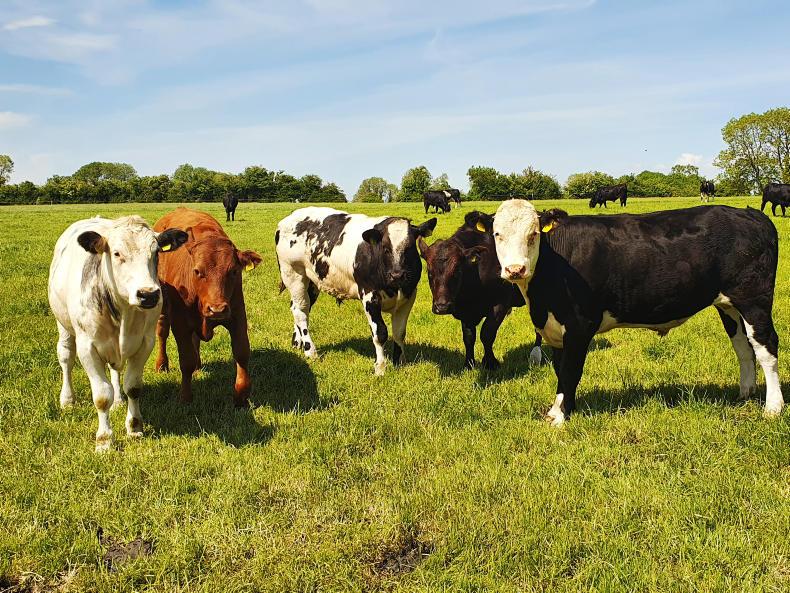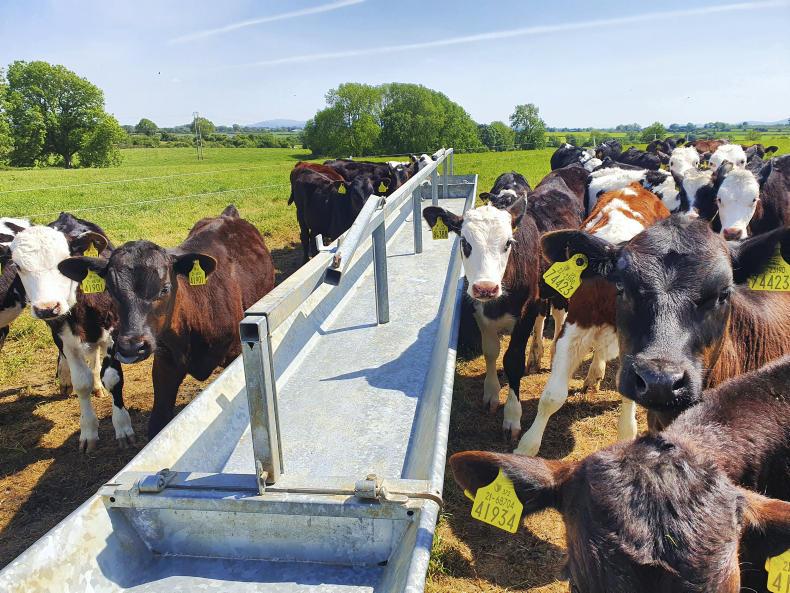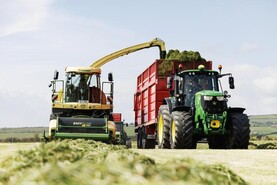Walking the farm during the latest grass walk, the need for moisture became all the more apparent. Ground that is less than two weeks since it had a grazing is starting to go to seed on the driest parts of the farm.
When a grass plant becomes stressed, it will try to produce a seed head in the hopes of reproducing as a survival mechanism. The main objective of a rotational grazing system is to try to minimise the heading-out of the grass plant.
Difficult conditions
Therefore, the conditions are making it very difficult to keep fresh leafy pasture in front of stock at the moment. The yearling heifers were in a paddock that had gone slightly strong and although grazing conditions are excellent, we will not achieve a suitable residual from grazing alone.
The mower will have to be used to clean off the paddock fully once the heifers are finished.
While we are lucky in some ways that the stocking rate is fairly low on the farm, and therefore demand for grass is as well, in other ways it would be easier to manage quality if we had a slightly higher stocking rate. However, it is a fine line between having too much and too little.
Growth rate is still respectable at 53kg DM/ha/day, while demand sits at 43kg DM/ha/day.

Cattle are to be weighed next week to see how they have performed since turnout.
The oldest batch, while maybe not looking their best after coming off milk, are still doing well and gaining weight.
They are still being offered a kilo of meal as much for management purposes as anything else, as it makes it a lot easier to spot an animal that may be sick or slow to come to trough.

The oldest batch of calves are being offered 1kg/hd/day concentrate.
The next batch of calves will be weaned this week, which will only leave a batch of 10 of the youngest calves left on milk. These were the last calves into the farm and will need to be fed for another three weeks or so.
Walking the farm during the latest grass walk, the need for moisture became all the more apparent. Ground that is less than two weeks since it had a grazing is starting to go to seed on the driest parts of the farm.
When a grass plant becomes stressed, it will try to produce a seed head in the hopes of reproducing as a survival mechanism. The main objective of a rotational grazing system is to try to minimise the heading-out of the grass plant.
Difficult conditions
Therefore, the conditions are making it very difficult to keep fresh leafy pasture in front of stock at the moment. The yearling heifers were in a paddock that had gone slightly strong and although grazing conditions are excellent, we will not achieve a suitable residual from grazing alone.
The mower will have to be used to clean off the paddock fully once the heifers are finished.
While we are lucky in some ways that the stocking rate is fairly low on the farm, and therefore demand for grass is as well, in other ways it would be easier to manage quality if we had a slightly higher stocking rate. However, it is a fine line between having too much and too little.
Growth rate is still respectable at 53kg DM/ha/day, while demand sits at 43kg DM/ha/day.

Cattle are to be weighed next week to see how they have performed since turnout.
The oldest batch, while maybe not looking their best after coming off milk, are still doing well and gaining weight.
They are still being offered a kilo of meal as much for management purposes as anything else, as it makes it a lot easier to spot an animal that may be sick or slow to come to trough.

The oldest batch of calves are being offered 1kg/hd/day concentrate.
The next batch of calves will be weaned this week, which will only leave a batch of 10 of the youngest calves left on milk. These were the last calves into the farm and will need to be fed for another three weeks or so.








 This is a subscriber-only article
This is a subscriber-only article











SHARING OPTIONS: